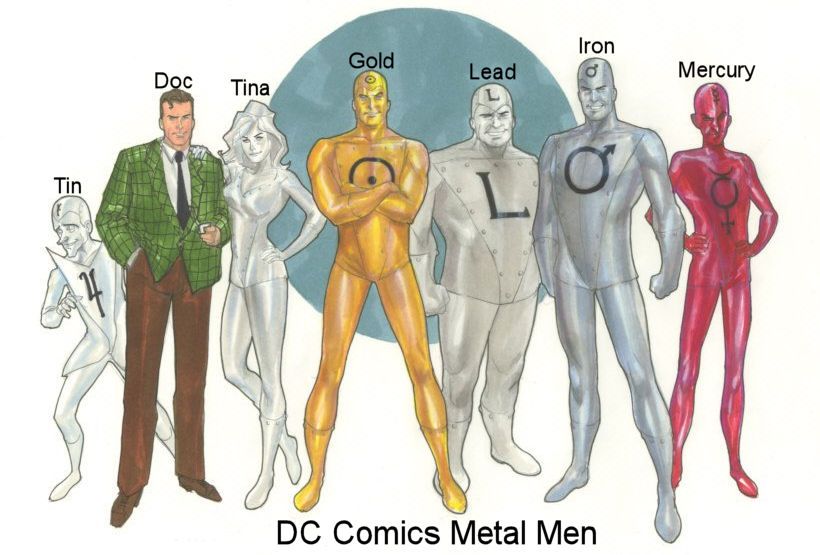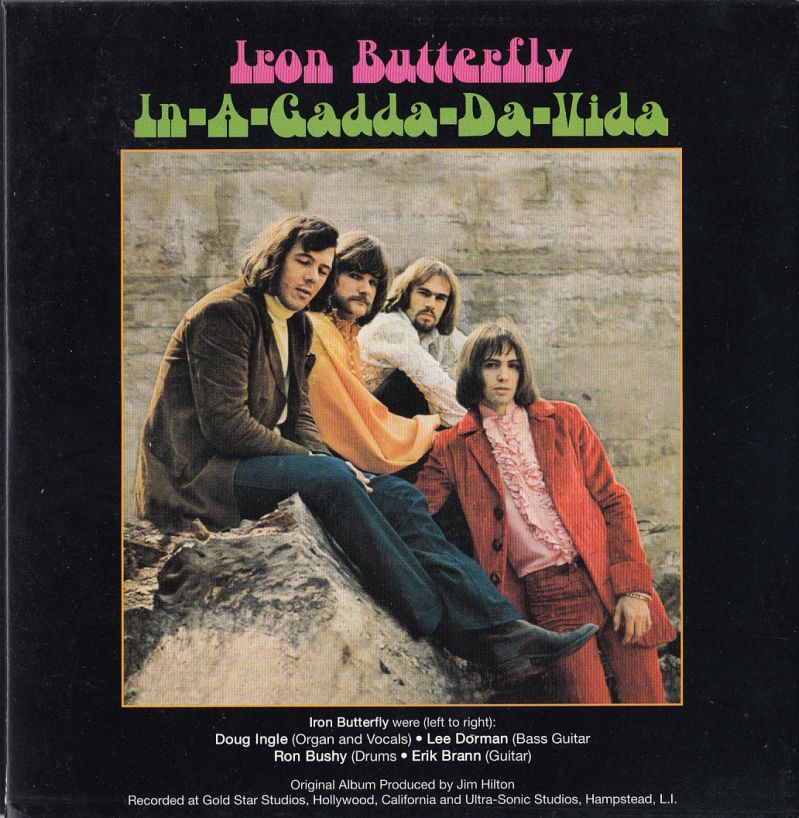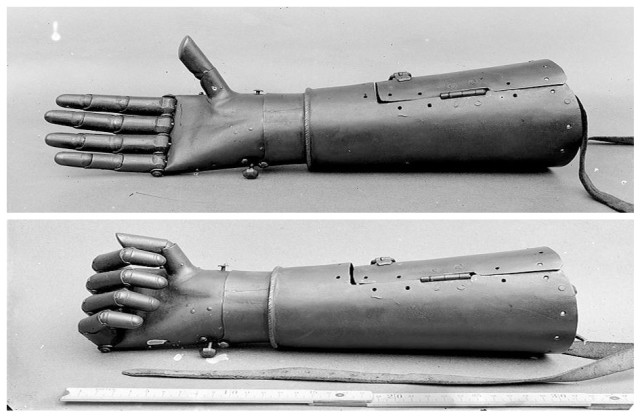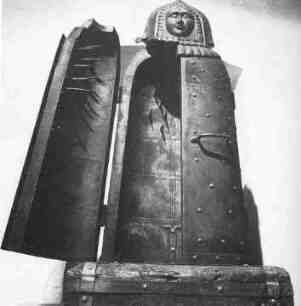News
Marketer Magazine: On The Record: Conducting Strong Interviews with the Media
He Who Smelted….
In this metal-heavy world of ours, where won’t you find iron?
Comics:
Metal Men: In the early 1960s, they were an eleventh-hour substitution into DC Comics Showcase anthology. But these robots with high IQs have proven their worth and continue to shine. Each member’s powers and personalities relate to their makeup; Mercury is quick to anger, Gold is their leader and Iron is strong. Oil can, Harry!

Iron Fist: New York native Danny Rand’s backstory is confusing. But with “Marvel-ous” powers that include martial arts, telepathy and a healthy dose of chi energy, his superhuman fist can pack a real punch.
Iron Man: What can we say that hasn’t already been said? In 1963, Stan Lee gave us the wunderkind Tony Stark, who took his infinite knowledge of technology and weaponry and created a suit — and some very watchable skills.
Film and Television:
Iron Man: See the blurb above and multiply it by three (by seven if you’re counting The Avengers flicks in there).
Iron Giant: From the 1968 novel The Iron Man (no relation), this 1999 animated film centers around the Cold War, nosy government agents and an unlikely bond between a young boy and a gentle, protective robot from outer space. A beautiful directorial debut by Brad Bird and quite possibly the only film featuring a protagonist named Hogarth.
The Man in the Iron Mask: At least four films were made between 1939 and 1998, followed years later by a TV series. But all were loosely based on Dumas’ Three Musketeers who banded together to free the king’s twin brother, imprisoned by the evil king and forced to wear an iron mask to hide his identity — and thus, the king’s malicious deeds.
Ironside: With a successful nine-year run, this gritty TV drama starred Raymond “Perry Mason” Burr as San Francisco detective Robert Ironside who used a wheelchair due to a sniper’s bullet. Nearly four decades later a reboot starring Blair Underwood was attempted with disastrous results. Critics hated it while many viewers were outraged at the casting of a non-disabled actor. On the bright side, with a total of three episodes it has the distinction of being one of the shortest-lived shows in television history.
Pumping Iron: In the quest of the muscle-bound to be crowned Mr. Olympia, this 1977 documentary popularized hard-core weightlifting and brought Arnold Schwarzenegger international fame.
Music/songs/artists:
Iron Butterfly: After a gallon of wine, this acid rock band’s organist wrote a tune he called “In the Garden of Eden.” However, due to his slurred speech his bandmates thought he was saying In-a-Gadda-da-Vida. Which turned out to be a good thing. Timing in at over 17 minutes, IAGDV not only broke new heavy metal ground in song length, but introduced the free flowing jam session that later inspired — and defined — groups such as the Grateful Dead, Phish and Widespread Panic.

Iron Maiden: Steeped in spookiness and all things macabre, this London metal band was founded in the mid-70s, found big success in the mid-80s and continued to split up and regroup for another decade, all while being a major influence in the genre and racking up hits like Children of the Damned and The Evil that Men Do.
Iron & Wine: It’s an odd pair. Odder still is that this darling of indie folk is just one guy; singer/songwriter Sam Beam.
Big Iron: Like your metal weird? Big fan of Saliva or Puddle of Mudd? Then you’ll love these stoner metal kids out of Austin.
Expressions/idioms:
Cast iron stomach: In the early 1900s, most people had cookware made of cast iron which was known to be virtually indestructible. A person who could eat virtually anything was said to have a stomach made of the same. Bring on the Carolina Reaper! *
*The units to measure “heat” in peppers are called Scovilles. To put it in perspective, a jalapeno can rate as high as 8,000 Scovilles, while a Carolina Reaper averages right at 2.2 million.
Strike while the iron is hot: Whether crafting weapons or horseshoes, any blacksmith worth his anvil would tell you that the hotter the iron, the more malleable it is making it easier to hammer into shape. Over the ages, this expression has come to mean to act quickly when a fortunate situation appears. So, should opportunity knock, for crying out loud open the door.
Irons in the fire: Again, related to smithies, the more pieces of iron you have heating up the more things you can create. But just like having a lot on your plate and risking biting off more than you can chew, too many irons in the fire can burn you out.
Iron entering your soul: Meaning to succumb to depression when placed in a hopeless situation, this rarely used expression can be traced back to the 1662 Book of Common Prayer, when an imprisoned and falsely charged Joseph felt the iron enter into his soul.
Geography:
Due to its dominance in the steel industry, Pittsburgh was once known as the Iron City. While these days not so much, you can still find an Iron City in Georgia, Tennessee and Utah.
Military/Politics:
Margaret Thatcher was not only the first female Prime Minister of England, she also held that position longer than anyone. Due to her no-nonsense, hard-edged political stance one Russian adversary dubbed her The Iron Lady.

Sure, Camelot had Knights of the Round Table. But Germany had Götz of the Iron Hand. Götz von Berlichingen was a knight and mercenary of high regard in the early 16th century. During one skirmish a cannonball fired and blew directly into onto the tip of the sword, tearing off his hand at the wrist. Seeing it as “but a flesh wound,” he had a local blacksmith fashion him two hands made of iron. One was merely for show while the other was an amazingly multifunctional prosthetic, giving him the ability to hold weapons, a cocktail and even a quill pen he used to write his memoirs.
First launched in 1797, the world’s oldest navy vessel still afloat is the U.S.S. Constitution. Its nickname: Old Ironsides.

The Iron Maiden: Honestly, we’re not even sure this belongs under “military.” Associated with the Middle Ages, this horrific torture device wasn’t documented until the early 1800s. On top of that, there is lively debate whether it existed or was just some gory literary concept. Basically, it was an upright casket-like cabinet made of iron and shaped into human form. Inside were sharp (often poison-tipped) spikes pointing inward so that as the device was closed the victim was impaled from head to toe. Suffice it to say, you do not want to be stuck in there.
Sports:
In golf, you have woods (taken from the original material used) and irons (taken from…well, you know). Much easier to remember than mashies and niblicks. Or cleeks and jiggers for that matter.

As far back as the 14th century, metal trays with a checkerboard pattern were used while cooking over fire. And, until the early 1920s, football fields were divided in the same pattern. That tray was called a gridiron.
